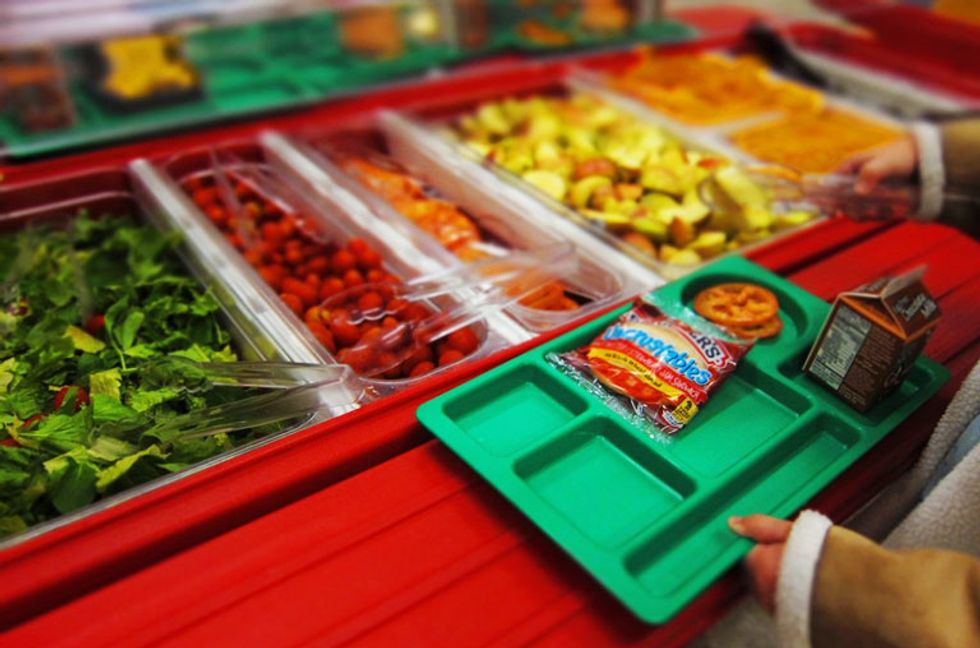Growing up as a Canadian, I always observed the stark differences between my school and the schools I saw in movies and on television shows. I saw differences in everything from dress codes to cafeteria food, and even in the very existence of middle school.
Here are some key examples of how Canadian schools are not only different to America's, but also better. I know not all of these are applicable to every Canadian or American high school, but it's certainly true from my experience.
1. Dress codes

https://en.wikipedia.org/wiki/File:Maison_Piacente_highschool_uniforms.jpg
The controversial topic of dress codes took the media by storm circa mid 2010s. I saw images of completely appropriate outfits with the caption "I got sent home in this."
I attend a Catholic high school, so uniform is required. However, we do have days that we can wear regular clothes, and we essentially don't have a dress code. Shorts can be as short as you please, spaghetti straps are okay and ripped jeans are the norm.
Regular, non-Catholic high schools here are the same way. As long as your genitalia isn't showing, you're good to go for the day!
Another thing I've heard about is kids getting in trouble for having unnaturally colored dyed hair. That is completely unheard of in Canada. I'm not sure what having colored hair or ripped jeans has to do with the quality of one's learning!
2. Middle school
It's not the same in every Canadian province, of course, but in Ontario, there is no "middle school." There's elementary school, which is attended from kindergarten to grade eight. There aren't typically lockers, and we definitely don't have a cafeteria.
For all eight years, you sit in the same desk in a single classroom with one teacher that teaches every subject. However, we do split the grades into age categories. This is done for no apparent reason, other than to make calling classes down to assemblies simpler. The category from grades one to three is called "juniors." From four to six, the group is called "seniors," and for grades seven and eight, it's called "intermediates."
3. Cafeteria food

https://en.wikipedia.org/wiki/File:Fruit-bar-pic-Web_-_Flickr_-_USDAgov.jpg
In elementary school, there is no cafeteria. We eat our lunch in our classrooms, right where we keep our books and school supplies.
In America, from what I've gathered, the cafeteria is typically stocked with free food for the students. I assume not all schools work like this. In my high school, we buy our food, probably like some American high schools. However, I can bet that our cafeteria food is somewhat better.
Judging from the pictures I've seen, our bootleg poutine sold for $4.75 CAD per serving must taste much better than what is served there.
4. SATs are unheard of
What are SATs? I've heard this term so many times, but have no clue what it means. From what I gather, it's a test you take in your senior year to determine your intelligence level. Your SAT score is then sent to universities to determine whether or not this one test was enough for you to get into a university.
5. Getting into University is much easier
America: You need to play four sports, be in two clubs, be the president of one of them, as well as student body president, have a single working parent, have a 4.0 average from your four years of high school and a 2300 SAT score.
Canada: Get a good enough mark for your program in your 12th grade courses.
6. Victory laps
I'm not sure if this was applicable in all Canadian high schools, but once upon a time, students were required to go to high school for five years. That has since changed, but because of this, students have the option to stay at high school for grade 13, or a "victory lap."
This doesn't mean you've failed, but perhaps you're not ready for University, or you decided to take extra courses.
All in all, both education systems are designed to help their students succeed. Although the debate about which is better is subjective, I personally believe that these six things make Canada's education system better.






















